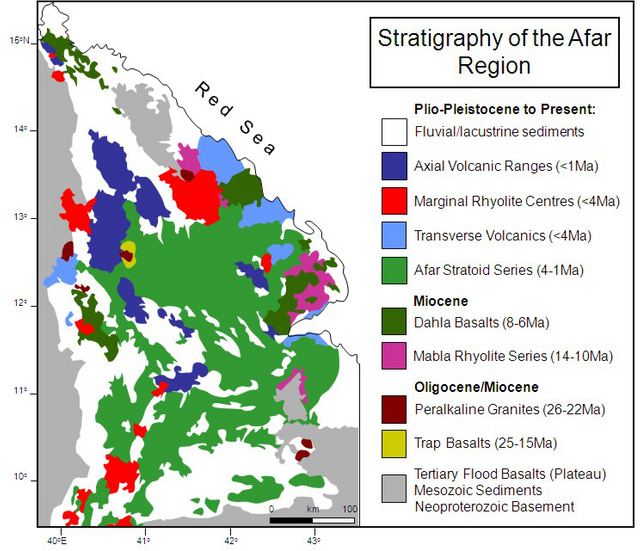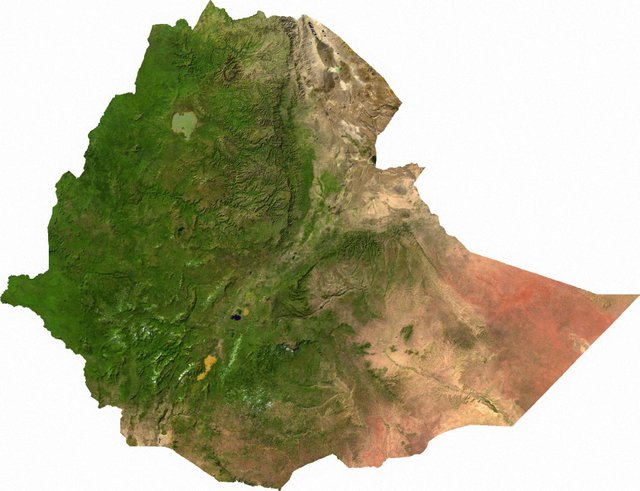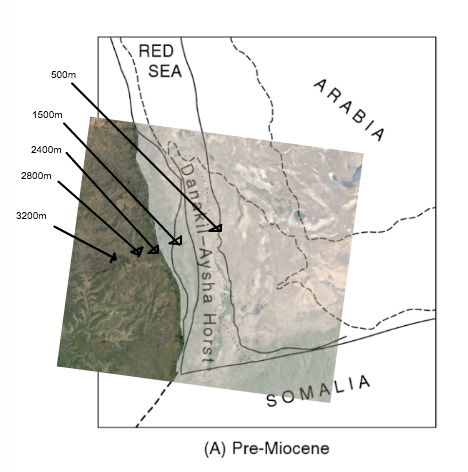On the idea that Hadar formation deposits of mammals (8000+ specimens over 500ka) could originate from surrounding regions of higher elevation, such as the Ethiopian Plateau
In 1976, over 6000 specimens representing some 40 species of mammals had been found from >250 localities in the Hadar area. The fossils display remarkable preservations due to the depositional environment, described by the author of Geological and palaeontological background of Hadar hominid site, Afar, Ethiopia as a unique taphonomic setting, a "low-level energy environment" with a high rate of sedimentation, which is similar to a lake.
The afar region has lacustrine (from Latin lacus, “lake”) sediments all over it, and
Depositional environments and stratigraphic summary of the Pliocene Hadar Formation at Hadar, Afar Depression, Ethiopia, a paper from 2008, mentions under Summary and Conclusions that it is likely that brief lacustrine transgressions or ephemeral floodplain lakes have gone unnoticed in this and other studies, instead being identified as pedogenically modified fluvial floodplain deposits, that the presence of lakes (and then possibly the hypothetical Sea of Afar) may have gone unnoticed.

Why does a lacustrine environment, with sedimentation reaching heights of 1600m in the Tendaho graben[1], with what is then unique settings for preservation of fossils, also feature thousands of specimens of mammals, from biotopes such as open wooded grassland?
One possibility, is that surrounding regions, such as the Ethiopian Plateau, drained into the Afar depression via a complex system of rivers, and seasonal rain periods, washing skeletons and fossils along with it such as for example craniums from Tragelaphus nakuae, where 190 specimens of crania and horn cores, as well as 28 dental specimens, had been recovered in the Hadar region in 2010[2], interpreted as 218 specimens of T. nakuae.

A sketch of a basin between Danakil and Ethiopia during the late Miocene, a wide geographical area on the Ethiopian Plateau, with a downward slope, a decreasing elevation stretching for dozens of kilometers before reaching the Ethiopian escarpment.
The topography of the region could feature seasonal rain periods which form fluvial systems that drain into the narrow basins of the early Afar.

The idea that geological deposits in the Afar region could originate from the Ethiopian Plateau, is not new. Campisano and Feibel included fluvial deposits from the Ethiopian Escarpment as the source of Hadar conglomerates, in their 2008 paper, and Tesfaye Yemane put forth the same explanation in 1997.[3]
Hadar Formation conglomerate deposits are likely to have resulted from high-energy braided streams originating along the Ethiopian Escarpment, either entering directly into the Hadar region or intersecting with the axial fluvial system nearby.
Amazing post. Thankyou for sharing @johan-nygren, Please help my posting advance,